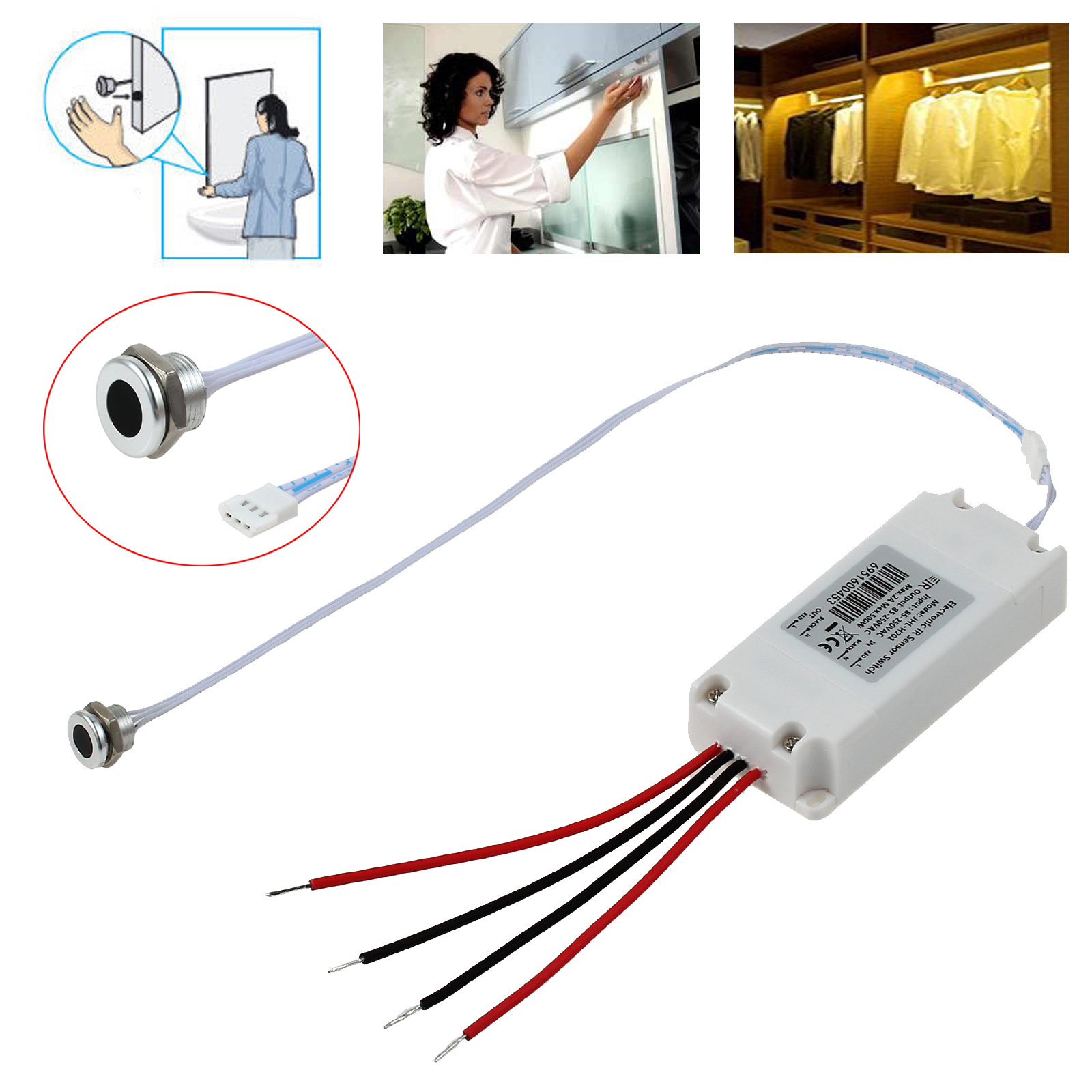Types of LED Cabinet Light Door Switches

LED cabinet light door switches are essential components that automate the lighting in your cabinets, offering convenience and energy efficiency. These switches come in various types, each with its own set of advantages and disadvantages.
Touch Switches
Touch switches are a popular choice for LED cabinet lights, offering a sleek and modern aesthetic. They work by sensing the touch of a finger on the switch’s surface.
- Advantages:
- Touch switches are easy to use, requiring only a light touch to activate the lights.
- They are aesthetically pleasing and can seamlessly blend into the design of your cabinets.
- Touch switches are generally durable and can withstand frequent use.
- Disadvantages:
- Touch switches can be sensitive to moisture and may not function properly in damp environments.
- They can be prone to false activation, especially if the surface is dirty or dusty.
- Touch switches can be more expensive than other types of switches.
Magnetic Switches, Led cabinet light door switch
Magnetic switches operate using a magnet and a sensor. When the door is closed, the magnet aligns with the sensor, turning off the lights. Conversely, when the door is opened, the magnet moves away from the sensor, activating the lights.
- Advantages:
- Magnetic switches are highly reliable and offer consistent performance.
- They are relatively inexpensive and easy to install.
- Magnetic switches are resistant to moisture and dust, making them suitable for various environments.
- Disadvantages:
- Magnetic switches require careful alignment during installation to ensure proper operation.
- They can be susceptible to interference from other magnetic objects in the vicinity.
Motion Sensor Switches
Motion sensor switches utilize infrared technology to detect movement. When a person enters the cabinet’s range, the sensor activates the lights. When movement ceases, the lights automatically turn off after a predetermined delay.
- Advantages:
- Motion sensor switches are highly energy-efficient as they only illuminate the cabinet when needed.
- They provide hands-free operation, making them convenient for busy individuals.
- Disadvantages:
- Motion sensor switches can be susceptible to false activation from other sources of movement, such as pets or air currents.
- They may require a longer delay time to prevent the lights from turning off prematurely.
- Motion sensor switches can be more expensive than other types of switches.
Remote Control Switches
Remote control switches allow you to control the cabinet lights from a distance using a handheld remote. These switches use radio frequency (RF) technology to transmit signals.
- Advantages:
- Remote control switches offer convenience and flexibility, allowing you to control the lights without physically reaching for the switch.
- They can be used to turn the lights on or off from multiple locations within the room.
- Disadvantages:
- Remote control switches require batteries for the remote, which can be inconvenient to replace.
- They can be susceptible to interference from other RF devices, such as cordless phones or wireless routers.
Choosing the Right LED Cabinet Light Door Switch

Selecting the ideal LED cabinet light door switch involves considering several factors to ensure optimal functionality and user experience. These factors play a crucial role in determining the switch’s suitability for your specific cabinet setup and lighting needs.
Cabinet Size and Layout
The size and layout of your cabinet significantly influence the choice of LED cabinet light door switch. Smaller cabinets may require a compact switch that seamlessly integrates with the design, while larger cabinets might benefit from a more robust switch with extended reach or multiple activation points. For instance, a narrow cabinet with limited space might necessitate a small, discreet push-button switch, while a larger cabinet with multiple shelves could benefit from a motion sensor switch or a magnetic switch that activates with the door’s movement.
Lighting Needs
The lighting needs of your cabinet, including brightness and color temperature, are essential considerations when selecting an LED cabinet light door switch. For example, a cabinet housing delicate items might require a dimmer switch to adjust the light intensity and prevent damage. Alternatively, a cabinet used for showcasing collectibles or artwork might benefit from a switch that offers adjustable color temperature, allowing you to fine-tune the lighting to enhance the display.
Power Source
The compatibility of the LED cabinet light door switch with various power sources, such as batteries or AC power, is a critical factor. Battery-powered switches offer flexibility and portability, but they require periodic battery replacements. AC-powered switches provide continuous power but may require professional installation.
Budget
Budget constraints can significantly impact the choice of LED cabinet light door switch features and quality. While high-end switches might offer advanced features like wireless connectivity and multiple activation modes, budget-friendly options can still provide reliable and functional lighting solutions. It is important to strike a balance between your budget and the desired features to ensure a cost-effective and satisfactory purchase.
